Preserving freshly picked basil from the garden for future use is a wonderful way to savor its flavor throughout the year.
Because the harvests can be bountiful, dehydrating leaves is an easy and simple option to extend and maximize the herb’s use in your recipes, without having to let any go to waste.
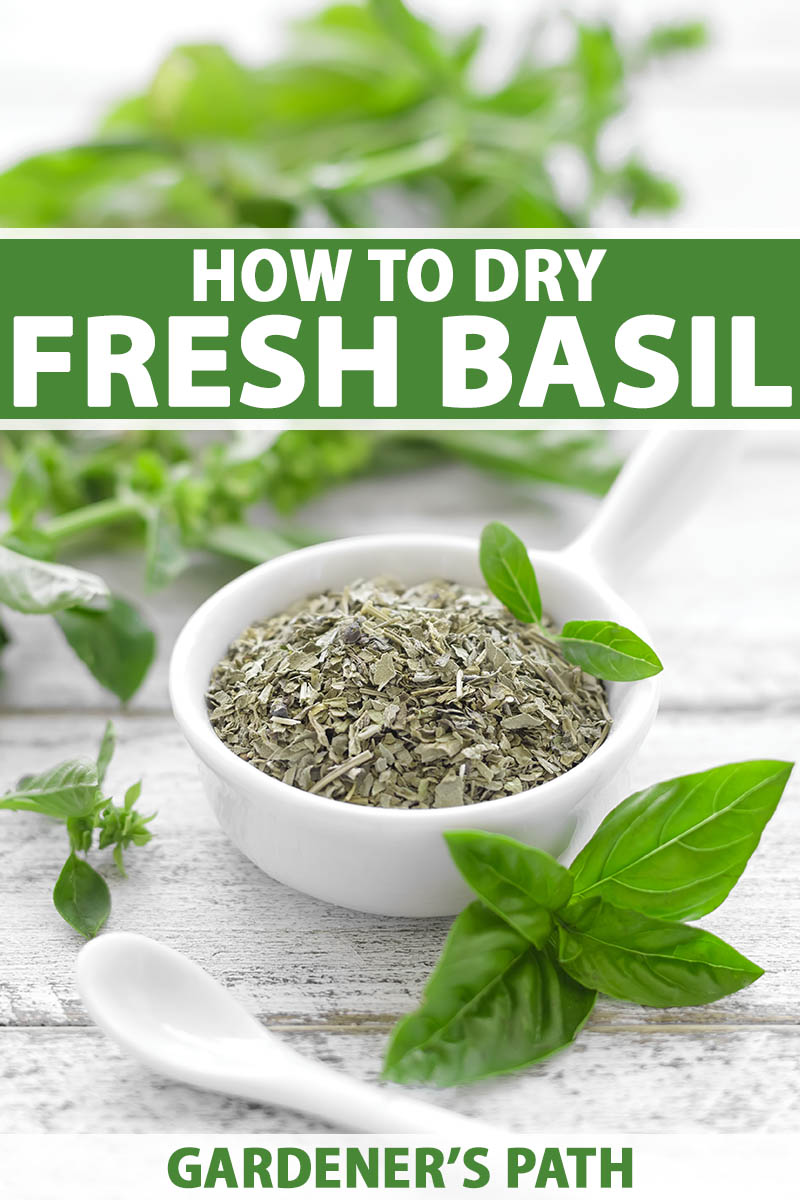
We link to vendors to help you find relevant products. If you buy from one of our links, we may earn a commission.
Basil is a delicate herb that requires gentle processing to avoid bruising.
There are a couple of drying options to choose from that we’ll cover here, and one method that I have found to be the most reliable in providing vibrantly green leaves that are highly aromatic when crushed.
With the simple steps shared with you in this guide, you’ll be ready to dry your homegrown herbs and relish in the delicious taste of preserved basil whenever you desire.
Continue reading to learn how easy it is to properly preserve your harvest through dehydration, along with discovering some helpful resources and culinary tips.
How to Dry Basil from the Garden
Harvesting
I find it tends to be a beautiful, sunny day when the basil in the garden is ready for gathering.
If you’re looking for some cultivation and care tips to encourage abundant and happy plants, our basil growing guide will get you started.
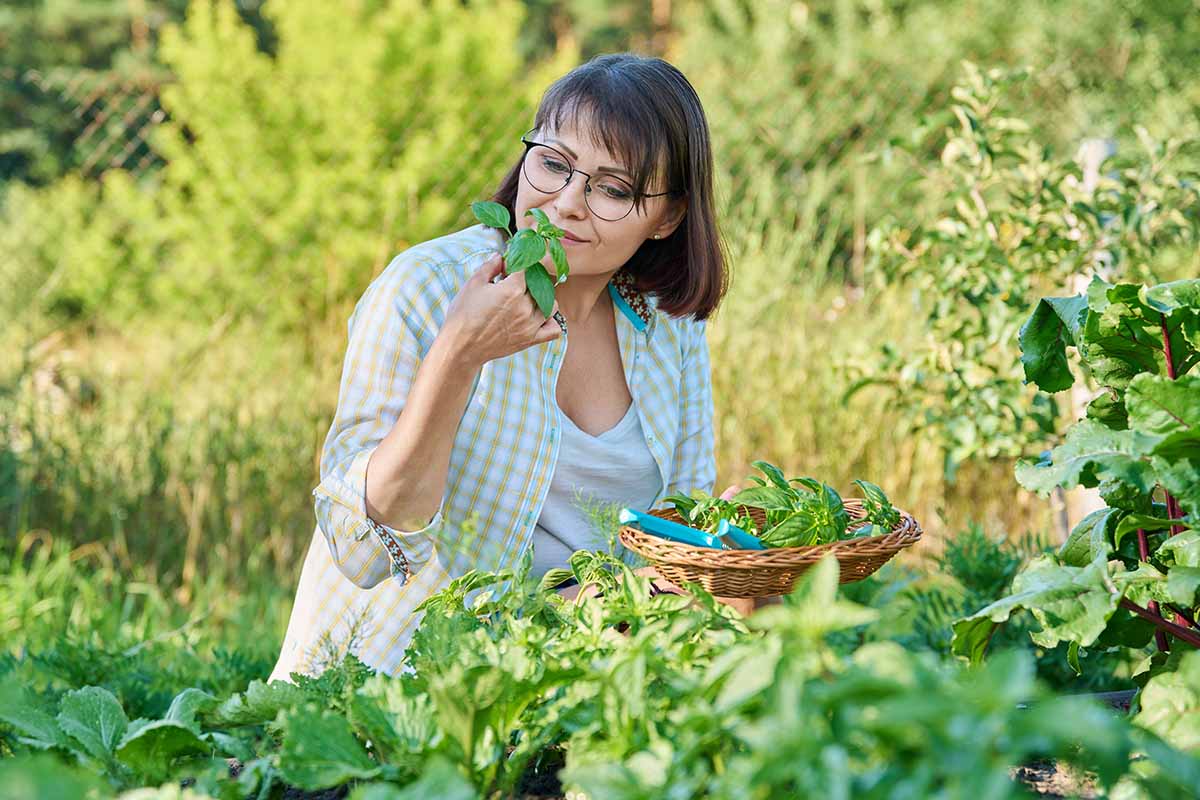
The many possibilities, when considering what I could create in the future with the fragrant leaves, are exciting and practically endless.
As with most harvests, I gather in the morning, after the dew has dried and before the sun warms everything up.
Before drying, storing, and labeling, I process my harvest thoroughly.
I rinse the basil and promptly place the cuttings in a salad spinner to remove as much excess water as possible before beginning the drying process.
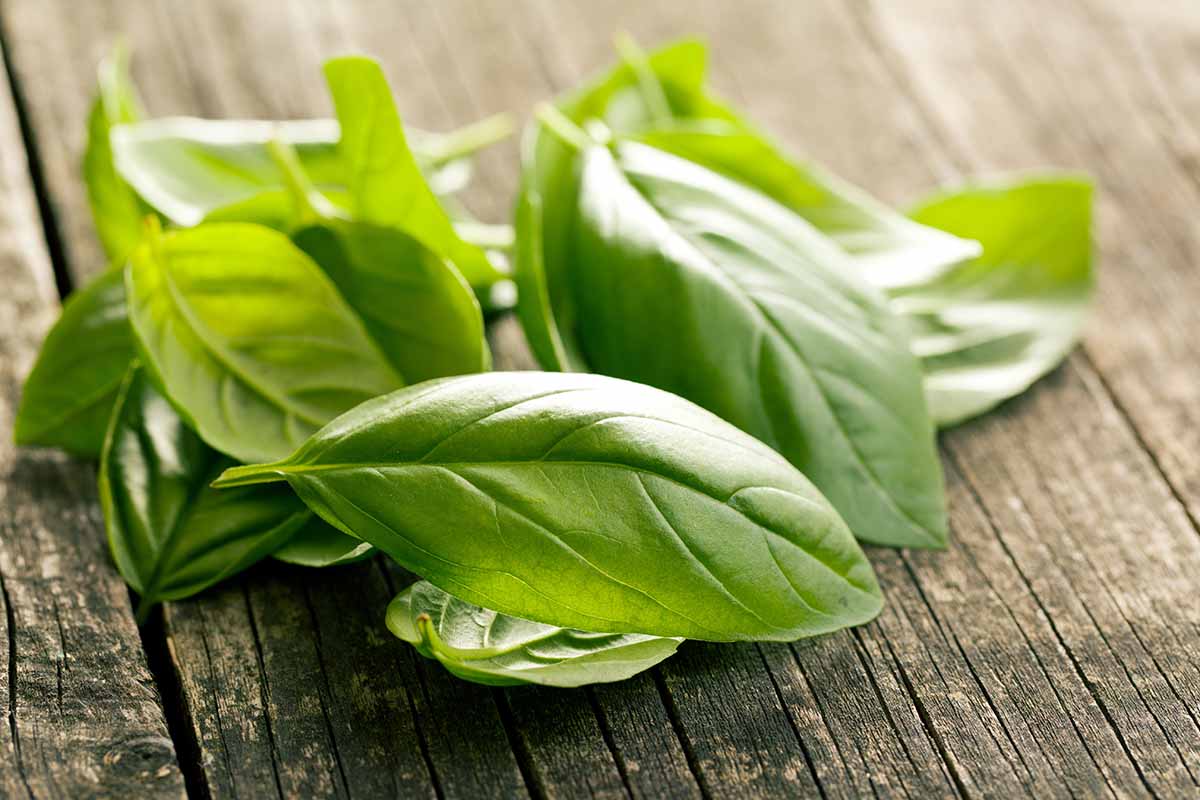
Part of prepping the leaves to dry them evenly is removing them from the stem. I like to either carefully pinch them off or use small scissors to cut them off their stems.
Once the leaves have been washed, dried of excess water, and separated from their stems, they’re ready for the final process of dehydration.
Methods of Drying
It’s common to see herbs bunched up and hung upside down to dry. And that might work for some plants, but basil does best when it’s dried using either of the two methods below.
I have found that the uncontrolled process of drying in bunches can cause the leaves to not be as potent in flavor, and they tend to bruise more.
For more general information on drying homegrown herbs, check out these tips. Do whatever works for you with the space that you have available for drying.
Dehydrator
Using a dehydrator to preserve an herb like basil has been the most beneficial option I’ve tried in terms of retaining flavor and vibrance.
This is because I’m able to control the timing and temperature at any time of the year.
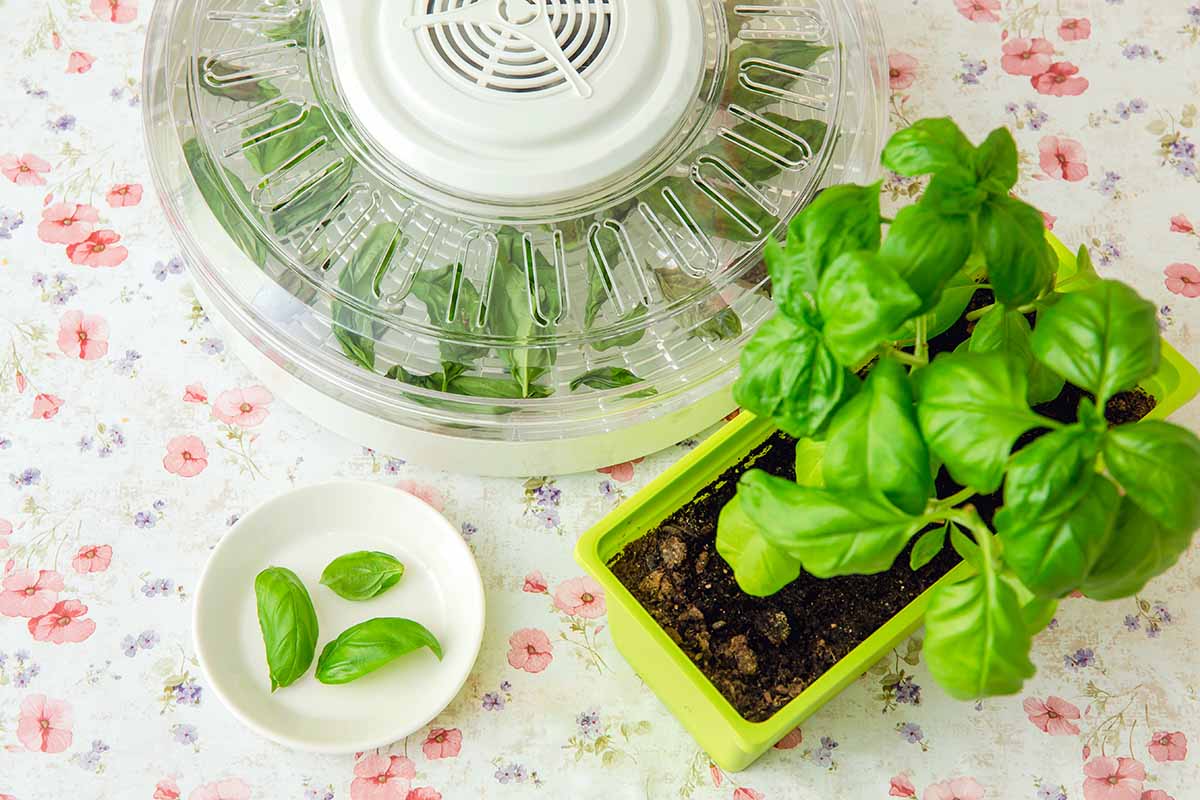
For the dehydrator method, I start by spreading the leaves out in a single layer on the trays.
Some dehydrators have an herb setting. If yours does not, set it to the lowest temperature, or around 95°F, for approximately four to eight hours.
I tend to check on the herbs every hour and promptly remove them when they are thoroughly crisp.
Don’t have a dehydrator at home? This Excalibur 4-tray, Stackable Dehydrator, available via Amazon, is a good option to start with.

And other models from this brand are reliable and used by many preservers.
Learn more about recommended dehydrator models in this review from our sister site, Foodal.
Herb Drying Rack
There are several types of hanging drying herb racks that use a mesh material, providing excellent airflow that supports even and quick drying.
Not as quick as using a dehydrator, but you certainly use less energy!
This Stack!t Herb Drying Rack that can be purchased at Gardener’s Supply Company is six feet tall and has six trays. I like that each tray has its own zipper closure!
It’s a good idea to locate a place that is out of the way so no debris can land on your leaves and it is out of direct sunlight.
Depending on the warmth of the room your hanging basket is in, it can take five to 10 days to dry the herbs completely.
Be sure to check on your herbs every day, and as soon as they crumble readily and completely between your fingers with no signs of moisture, they are ready to be stored.
Storage Tips
Whichever drying method you choose, be sure to store your dried basil in an airtight container in a cool and dark place. This will help to prevent mold and ensures the freshness of your herbs.

Depending on how well the herbs have been dried and stored, they can last for more than two years!
It’s best to rely on your senses, and go by the color and flavor to determine if dried herbs are still good if they’ve been in storage for a while.
But you’ll love the flavor of these for use in your cooking. I tend to go through mine in a few months!
Using Dried Basil in the Kitchen
I love how this simple process allows me to have this herb readily available throughout the year, which is an excellent addition to my culinary repertoire.
Seeing my dried homegrown basil in my spice rack inspires me to experiment with new ways of using the herb in my cooking.
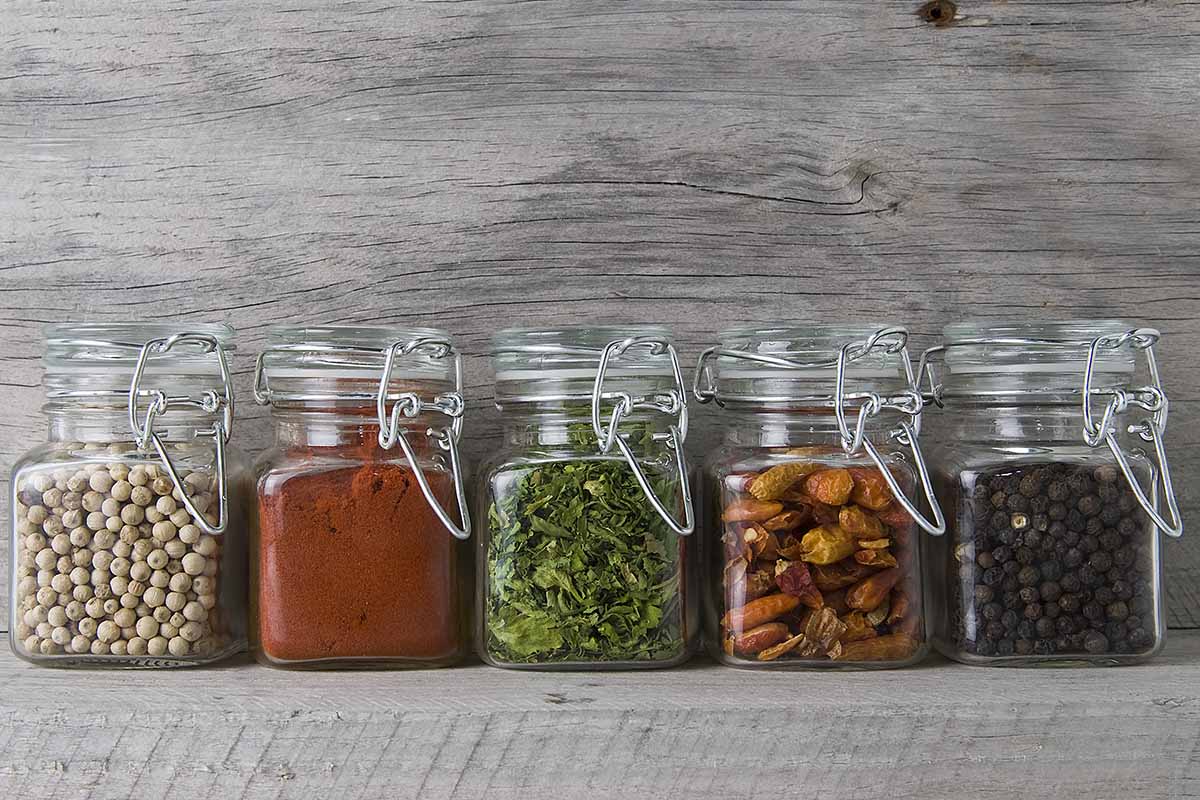
From topping homemade pizzas to adding it to my tomato soup, the dried version of the herb packs a punch of flavor when dried and stored correctly.
It’s a must-have for a traditional Italian seasoning blend and infuses well into oils and vinegars that can be used in various recipes.
Consider infusing the water you use to cook pasta with the flavorful herb to take the flavor up a notch.
The idea of adding some to a savory scone recipe or grilled cheese with sun-dried tomatoes makes my mouth water too!
With each new recipe, I am reminded of the versatility of dried basil and how it can elevate so many dishes. It truly is a must-have in any kitchen for those looking to expand their culinary horizons.
From Garden to Spice Rack, Basil Is Bountiful
As I reach for the jar of basil on my spice rack, a sense of satisfaction washes over me.
By harvesting and drying my homegrown leaves, I can add a personal touch to my cooking by using herbs from my own garden.
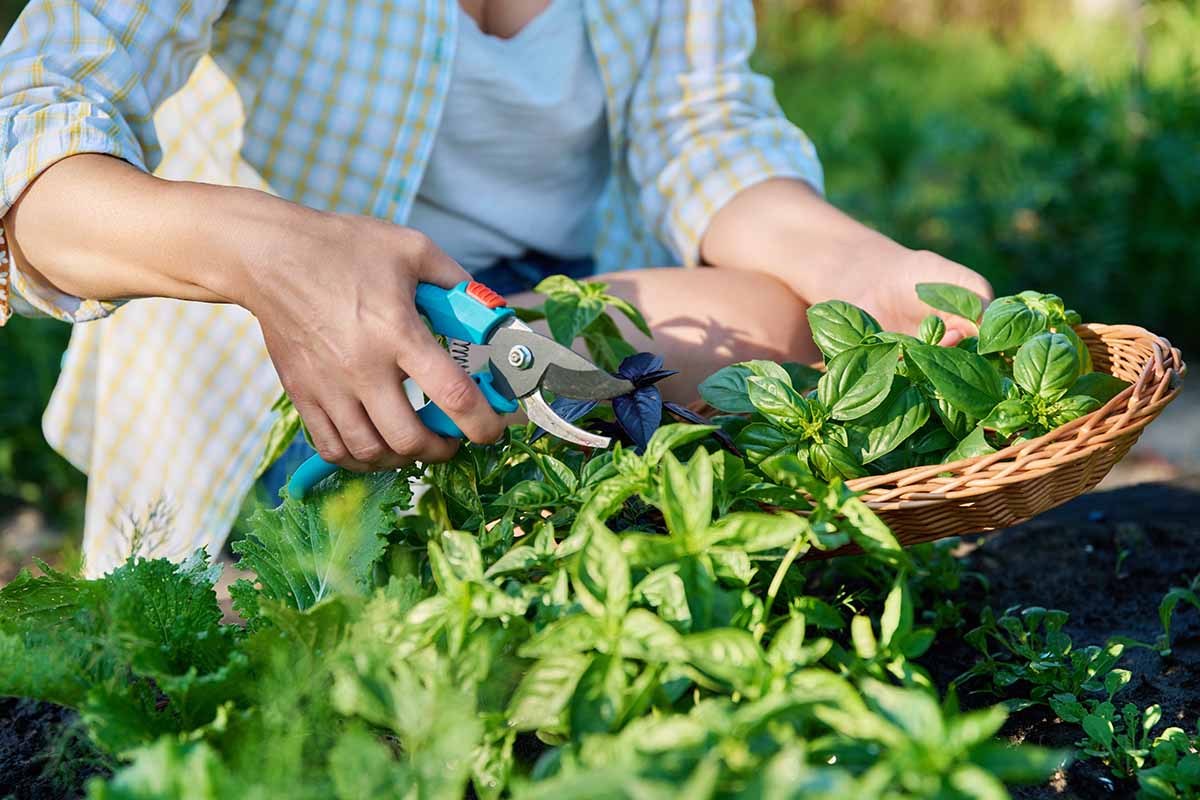
Now, whenever I need dried basil for a recipe, I know that I have my own stash ready and waiting. It’s a small accomplishment, but it’s a reminder that with a little effort and care, we can create something special and useful.
Have you tried drying your homegrown herbs? Let us know in the comments section below!
If you found this guide helpful, you’ll also enjoy reading these articles about growing basil in your garden next:
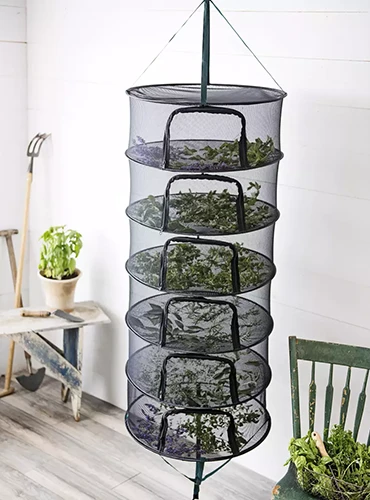



I always dry mint also celery leaves and sage ,I will definitely dry basil when it has grown big enough .
Thanks for sharing, Margaret, I hadn’t thought of drying celery leaves, so thank you for the tip!
Great article.
Thanks for the great article!
You’re welcome Michelle!
Can you tell me if wild basil works ?
Are you asking about drying Clinopodium vulgare? Yes, the leaves of this plant can be dried and used as a seasoning or to brew tea.